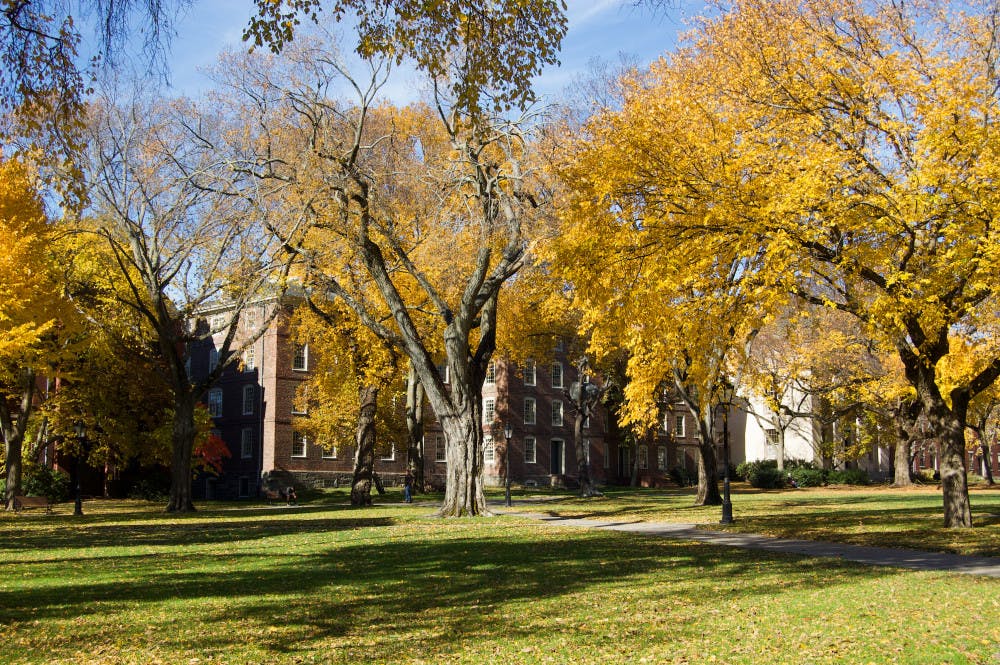President Christina Paxson P’19 announced three possible scenarios for the 2020-2021 academic year in light of the COVID-19 coronavirus pandemic at Tuesday’s faculty meeting.
The semester could proceed as planned with all students returning to campus in September. But, the University is also preparing for the chance that the pandemic continues with such severity that the fall semester is taught remotely. Or, to reduce population density on College Hill, the University could turn to a three-term academic year.
Paxson will make a decision on the coming academic year by July 15, she wrote in an email to the University community Wednesday morning.
In the best-case scenario, which Paxson said is “very unlikely at this point,” the pandemic will have receded and innovations in testing and treatment will have progressed enough that the semester can begin as usual after Labor Day. This plan, drawn from "looking at countries that are further ahead," would still require some restrictions on large group gatherings.
In the worst-case scenario, a new wave of coronavirus cases when the national and Rhode Island economies open up would reimpose and continue restrictions to the extent that the fall semester would have to take place online.
Paxson is also “very cautiously optimistic” that a third scenario could occur: The University may host three terms of the academic year rather than its typical two-semester schedule.
This model could be implemented if the Rhode Island economy opens and domestic travel is allowed, but some social distancing is still maintained, Paxson said. In this model, the University would shift to fall, spring and summer terms, with students only attending two out of these three semesters.
According to Provost Richard Locke P’18, this model would decrease campus population density, with no more than three-fourths of the student body on campus at a time.
A specific budget will be developed to fit each of the three contingency plans. Paxson assured faculty at the meeting that the University had enough financial resources for each of the three academic-year models. A finance team has developed a liquidity model to ensure the University has enough cash, she added.
Paxson also said that the endowment cannot be used directly to pay for these expenditures since it is invested in less liquid assets and comprises different funds specifically designated for different purposes. The endowment, according to Paxson, will rather serve as a safety net which ensures the University can continue to operate, by offering "collateral lines of credit and issuing debt" to enhance liquidity.
Locke added that the University expects that 10 percent of students will not return to campus in the fall, either due to travel restrictions or choosing to take a gap year. Paxson added that this reduction will allow students to be “spread out” by remaining six feet from each other and having their own singles.
Whichever scenario takes place, the University will have to adhere to Rhode Island’s plans and restrictions as a part of the state community, Paxson said.
In order to re-open, Paxson stressed that University would have to develop contact-tracing and testing capacities as well as facilities for self-isolation to ensure that the pandemic does not spread on campus. The University will offer safety equipment, including masks, to all members of the community to guarantee safety.
Paxson stated that the four groups that were announced in April’s faculty meeting are still working together in COVID-19-related planning. Paxson highlighted that these groups are not decision-making groups; rather they occupy an advising and planning role. Paxson added that the membership for these groups will be posted in the next few days in the COVID-19 updates on Brown’s website.
A faculty meeting will be held May 22 to further discuss the plans.
In closing her community-wide email, Paxson wrote that she “wants nothing more than to see all of you in person and on campus.”

ADVERTISEMENT




